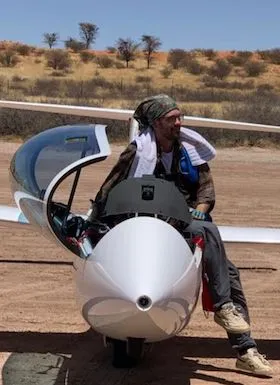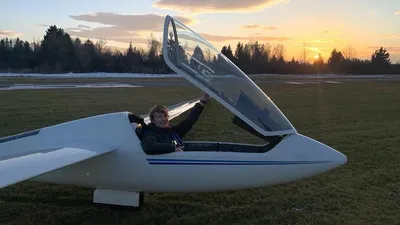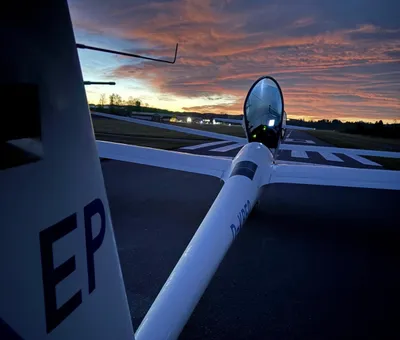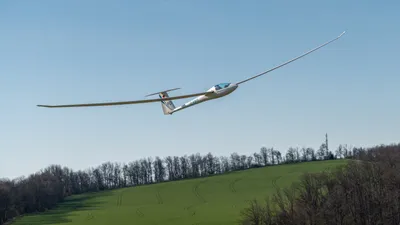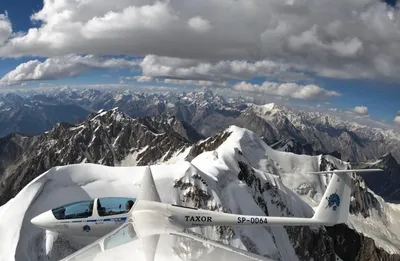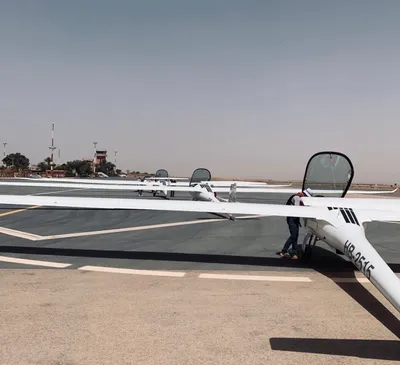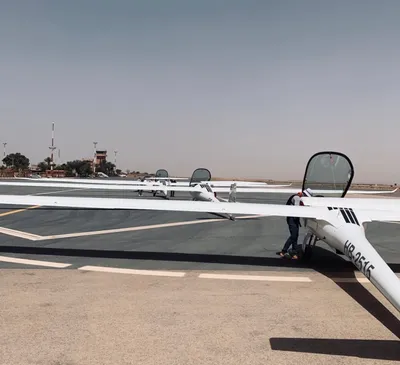Alexander Schleicher | AS 35 and Electric Gliding
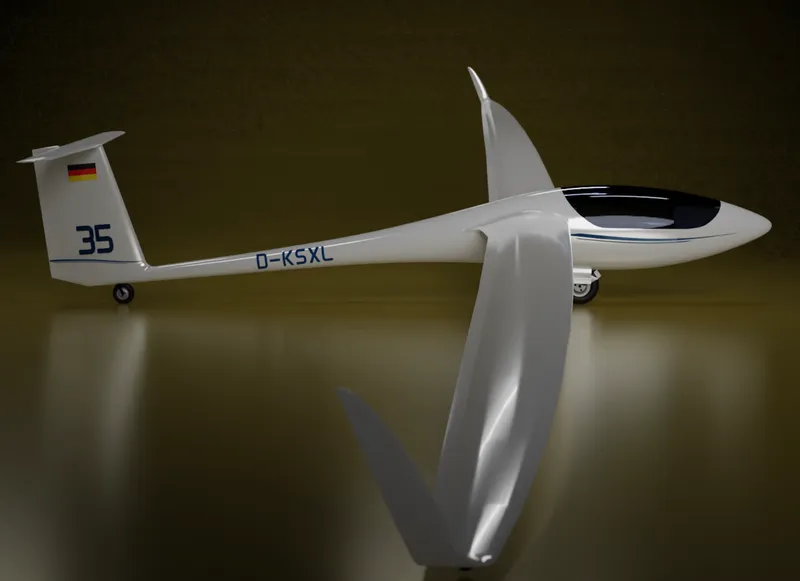
In the second part of our series on glider manufacturers, we meet Patrick Wenzeck from Alexander Schleicher. Patrick is a passionate glider pilot himself. He tells us about Schleicher's idea of their electric concept and gives us a sneak peek of the new AS 35 Mi. We meet him in his office in Poppenhausen.
Hey Patrick, you are quite new at Schleicher. Tell us a bit about yourself.
I've been with the company for about three years now. I support Uli Kremer with day-to-day customer care and develop marketing concepts for the company. Before joining Schleicher, I worked for 5 years in design and marketing in the automotive industry.
A difficult decision to switch from a large industry to a niche?
The opposite! The opportunity to combine my two passions, flying and marketing, in my job seemed unique. I don't regret it for a second.
Looking at your website, you're not the only young face at Schleicher.
We are in the fortunate position of having a very young team of motivated engineers who want to make a difference in gliding. Young ambition paired with many years of experience of Uli and Peter Kremer (descendants of the Schleicher family) ensures an excellent dynamic. The most important: everyone is always open to new ideas! If this were not the case, we wouldn't already have two EASA-certified electric self-launchers in our portfolio.
So the two gliders are the products of your vision as a traditional manufacturer with an openness to new ideas?
Indeed. For a long time, the glider industry only looked at glide ratio. At some point, the high wing loading and resulting high-speed polars were added. Today, independence is quite important, as well. It was clear to us that the classic combustion engines would not be the only option.
We took the first step back in 2010. The ASG 32 needed a sustainer system, which we didn't have at the time. The idea of an electric motor was immediately on the table, which was ultimately realized with the ASG 32 EL.
Our top priority is to supply customers with a truly mature and reliable product that is also equipped for future developments. From our point of view, it pays to think "outside the box".
What do you mean exactly?
For example, the entire system for electric self-launchers was developed in-house from scratch. The foundation was the research project for the ASG 32 EL, our first aircraft with an electric sustainer system. Now, we have all the know-how on this subject in-house and can design the system according to our ideas.
Do you also manufacture the components in-house as well?
No. However, all external components are produced according to our design, and we don't have to make any compromises for ourselves and ultimately for the customer. This was extremely important to us to remain flexible in the future.
So your current system has a lot of reserves?
It has. In the current configuration, the motor produces around 38kW during self-launch. However, the motor is designed for around 124kW.
The controller is located centrally in the engine box and is optimally ventilated by air
In addition to sufficient reserves, we wanted to keep the system as simple as possible to make it less susceptible to damage, among other things. For example, our controller is purely air-cooled due to its favorable position in the motor box. This means we can dispense with fans and the associated technology. Cooling is therefore absolutely no problem, even in hotter regions.
This is quite interesting. With the Rotary Engine or Solo, we would now be talking about "drilling up". Could you tweak the performance in the future?
This would theoretically be possible if adjustments were made to the other components. Right from the start, our development philosophy was clear right: Safe, simple, and resilient. To achieve this, all components must be generously designed and perfectly coordinated. In this way, we not only want to achieve greater safety but also make the system durable in the long term. Usually, a glider is operated for well over 50 years.
Let's stay with the lifetime of a glider. With the Antares, the battery has to come out at some point. What does that look like for Schleicher gliders?
This is not the case with us. Depending on the treatment, our cells will also lose capacity after 11 years plus or minus, but they do not have to be exchanged. There are only two components in the entire system that have a TBO (Time Between Overhaul): the motor bearing and the propeller. Both have to be replaced after 1000 engine hours. We are very curious to see who will be the first to do this.
Many manufacturers place the batteries in the fuselage. You have a different philosophy.
Everything has its advantages and disadvantages. Of course, we also considered all options. In our opinion, the advantages of a battery in the wings outweigh the disadvantages:
Nowadays, the fuselages of gliders are very small, which takes a lot of options. In the wings, larger batteries can be accommodated. Our system provides around 25 % more capacity with 25 % more cells.
The wing batteries are positioned in the center of gravity. Therefore, we do not need any balancing mass in the cockpit or tail unit to achieve a sensible payload in the cockpit. In addition, if you have batteries in the fuselage, the weight of the non-lifting parts is a big problem and comes with major limitations to the payload. We have a payload of 115 kg with an additional 10 kg for luggage in the electric self-launchers, without having to reinforce the wings or add weights to the outer wings. This would also help us to adapt a heavier cell type without modifying or even redesigning the wing. Coupled with a spacious cockpit, there is room for almost every pilot. As we have no batteries in the fuselage, there is plenty of room in the motor box, as well. Even larger motors and controllers could be stowed here. We are prepared if the technology develops further.
Your controller seems to be well-ventilated. What about the batteries?
The wing batteries are designed in a way that each cell is on the outer wall of the string. This is great for heat dissipation and very helpful for, temperature management and service life.

Again, the focus is on our philosophy: safe, simple, and resilient. The batteries are part of the overall aircraft system. The pilot doesn't have to lift 50 kg of batteries into the fuselage. With our battery management system (BMS), we have developed an intelligent feature to monitor the battery during charging and discharging. Ultimately, the batteries are far away from the pilot, which is a significant advantage in the case of fire and the associated gas development. This is part of our Me Safety Concept.
Tell us about the Me Safety Concept. The result regulations, or your demand?
In principle, it is part of the requirements. In case of fire, it has to be ensured that the glider returns to the ground intact within a certain period aim. However, our aim is to ensure that the structure of the glider remains intact. So in a normal case, no further repairs are necessary. Even the entire battery string shouldn't be replaced completely, only the damaged cell.
Let's move on to your gliders. Both the AS 34 Me and the AS 33 Me now have their type certificates, congratulations! What about the climb performance?
Thank you very much! If you perform a self-launch with the AS 34 Me at 600 m, there are still about 2200 meters available for climbing. This is enough for about 125 km to your destination. We flew this with a take-off mass of 520 kg. The glider climbs at around 3.5 m/s.
This measurement flight took place in calm air?
No. It was around midday and the day was quite windy. By the way: The same climb rates apply to the AS 33 Me. Much better: you can reach around 170 km, as the glide performance of the 33 is significantly better.
Some pilots like to fly both, free and in competition. Other manufacturers offer options for removing batteries. Does this also apply to the AS 33 Me?
The batteries on the AS 33 Me cannot be easily removed. This is where weighing up the advantages and disadvantages comes into play again. Of course, in the equation, you always have to look at how many cases (including in competition) you need a really light aircraft. This is often presented in a very extreme way and is of course the first argument, but ultimately you would be best advised to go with a pure glider. We have to wait and see how time and, above all, customers evaluate the topic in use.
The target group for the AS 33 Me is obvious. What's on your mind for the AS 34 Me?
The remaining 90 % of glider pilots. In addition, those who have always been put off by oil, fuel, and maintenance costs, but still looking for independence. With the AS 34 Me you can take off alone, you come home in the evening, you have little maintenance effort, and well handling in the air and on the ground.
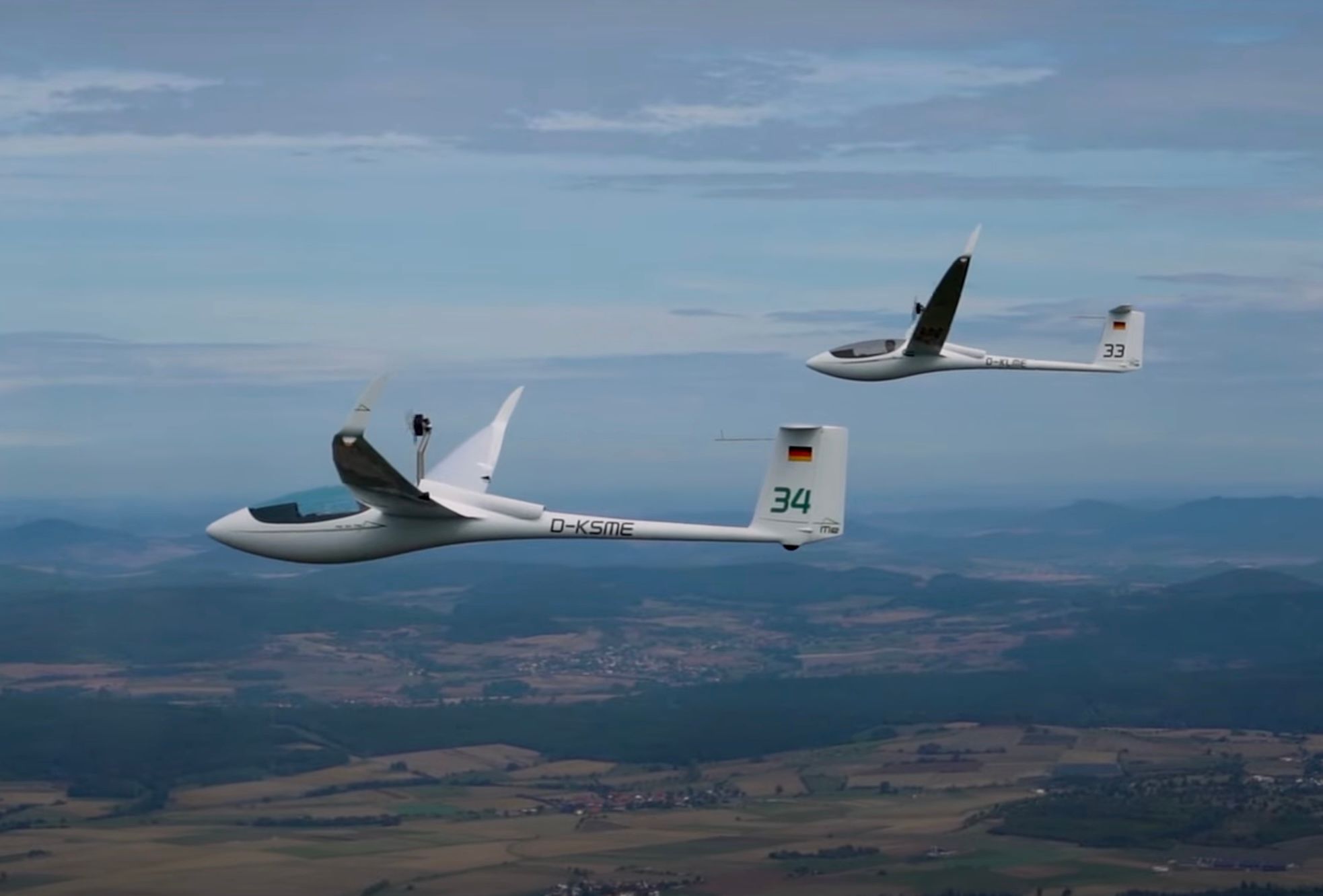
In the beginning, we talked about openness to new things. We are increasingly asking ourselves whether it always has to be the aircraft that is optimized for competition. Most of us just want to have fun flying and live out our passion. This requires less of a sophisticated racehorse and more of a reliable companion who can make flying as stress-free as possible. Here the AS 34 Me is not only interesting for private pilots, but also for clubs.
But looking at the AS 35 Mi, you're trying a little balancing act between these two target groups? After all, you call your new open class the "perfect all-rounder".
From our current perspective, the AS 35 is in the open class, as it has a wingspan of 20 meters. Here we asked ourselves the question of whether gliders should always be considered in these competition classes, or whether they could break out.
The AS 35 will undoubtedly be very good in competition, the performance data speaks for itself. But how many people still fly in competition and how many people simply want to get the maximum experience out of their hobby and have fun at the same time? The latter is especially possible with a self-sufficient aircraft that is easy to handle on the ground and in the air, yet can still fly with remarkable performance. There is only one winner at competitions. When you fly free and land happily back home, everyone is a winner.
The ASH 31 is well received by customers. Why are you investing your resources in a new open class instead of a new two-seater?
With the AS 33, we have developed a completely new profile family. This enabled us to create a great successor to the extremely popular ASG 29. The next logical step is to transfer this profile family to the open class and create a worthy successor to the ASH 31 Mi.
Tell us about the new profile family.
Like our electric concept, this was also developed in-house from scratch. The profile has extremely low drag combined with a high lift coefficient. , According to our calculations, the AS 35 has a sink rate of 2 m/s at 235 km/h, which is incredible.
And the ASH 31 Mi?
The ASH 31 Mi cut this line at approx. 190 km/h. That's an enormous 45 km/h more in this speed range. And the glide ratio should not be forgotten either. The AS 35 Mi achieves a glide ratio of over 63 with a wingspan of only 20 m. That's 6 glide points more with 1 meter less wingspan.
Seems you attached great importance to a high wing loading and fast cruise speeds. How do you rate the glider in weak conditions?
Due to the high lift coefficient, we expect the AS 35 to climb quite well, even in weak conditions. A minimum wing loading of 44 kg/m², is a good achievement for a self-launcher. Furthermore, with a wingspan of only 20 meters, the glider is much more maneuverable than other open-class aircraft. This helps a lot when centering difficult thermals.
If you talk to AS 33 customers after test flights, they are usually extremely surprised at how the combination of low drag and high lift is possible at al.
Jonkers thinks he has found the optimum for the open class somewhere between 24 and 24.5 meters. Do you see the optimum at 20 meters?
Interesting point. There are several ways to approach a design. Jonkers seems to have found the optimum for an open-class glider, which flies at 850 kg. The AS 35 will never see this weight, it has a maximum take-off mass of 730 kg. This makes the aircraft much more suitable for everyday use by the pilot.
Nevertheless, we did not want to sacrifice any performance. Our approach is therefore to fly a high wing loading despite a lower weight. We looked at where the optimum lies between fast flight and drag. You end up with a smaller wingspan.
Will there be more wingspans as options?
We want to serve the popular segment of 18m self-launchers as well. So, there will be an option. Span combinations of 18 m and more than 20 m are structurally difficult with this design. It was already an enormous challenge to get the 62kg/m² wing loading into such a small wing. We pushed the limits already to get the maximum out of it.
The rendering of the AS 35 looks exciting. An elliptical wing without edges?
Yes, that's what it will look like in the air. There will also be a swept back wing. You can be excited. The more trapezoids the wing has, the more elliptical it appears and the better it works.
We are eager to present the finished aircraft with this great wing geometry in real life for the first time.
Do you already have a sneak peek for us?
Of course:

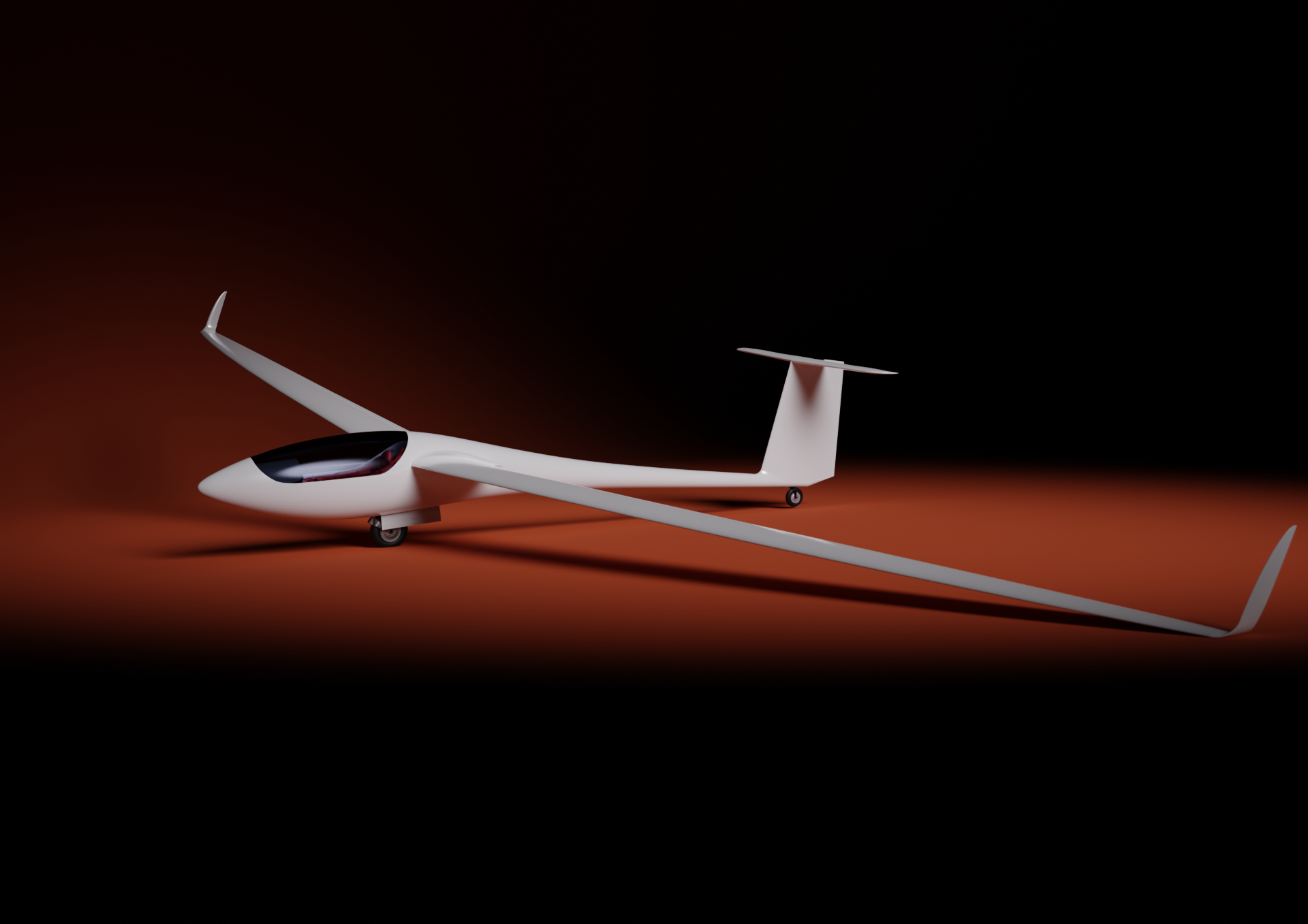
What about an AS 35 Me in the future?
The current energy density of the cells is a big problem here. We don't want to make any compromises here but rather offer our customers a fully developed product.
From our point of view, it currently only makes sense to make a glider self-launching electrically up to 620 kg. Since the AS 35 was not designed for 850 kg, the project will be sensibly implemented earlier than with other open-class aircraft. But we will think about that when the cells allow a decent capacity for 730 kg. We want to stay true to ourselves and not go below the 2800m of the other Me aircraft just to force an electrical system into the 35.
What will happen next for the ASH 31 Mi?
We are currently building the last ones. The production costs of the AS 35 and ASH 31 are similar and therefore not much cheaper. The AS 35 offers far more possibilities and replaces the ASH 31 Mi in this product category.
How many gliders leave your factory every year?
Before the multiple crises, there were between 50 and 60 gliders per year. At the moment it's slightly less. We would like to build more again in the future. The problem is complex. As everyone knows, there are still problems with the supply chains. It becomes more and more difficult to find qualified people who are good craftsmen. Remember, building gliders is still manual work. On top of that, gliders are also becoming increasingly complex as an overall system. At the moment, we need around 2500 man-hours to build a glider. By way of comparison, the ASW 20 took around 1000 hours to build back then.
Complex aircraft: another reason why there is now one letter less on your gliders?
Indeed. There used to be two teams that designed two gliders in parallel. The main person responsible was the third letter on the type shield. We are now bundling our entire development capacity into one project. On the one hand, because the systems themselves are becoming more complex. On the other hand, to be faster. Otherwise, the AS 34 Me and AS 35 would not have received their EASA-type certification so quickly.
Jonkers wants to revitalize the Standard Class with the JS4. Schempp-Hirth stops production of the Discus 2c. What do you think?
You have to weigh up the costs and benefits here. The development costs of a new Standard Class design would be so high that the price would be similar to a new 18m flapped glider. The number of customers who would pay the same price for an aircraft with lower performance is negligible. From our point of view, it is extremely courageous what Jonkers is planning in the Standard Class.
Now things are getting serious. The market of the two-seater class is enormous and Schempp-Hirth's Arcus seems unbeaten. Can you just sit back and watch?
No, let's be honest. The ASG 32 has two problems that are reflected in its current market share. The sustainer option of the ASG 32 EL was somewhat more expensive than a conventional solo sustainer. This deterred many gliding clubs back in time. They also didn't want to be guinea pigs for the new electric concept. After all, we are talking about 2014, when electric propulsion in gliders was not yet "standard", but exotic. Bach then, only electric enthusiasts were fans. Furthermore, the glider came onto the market a little later.
Regardless of this, the flight performance and especially the high-speed characteristics are remarkable. Admittedly, you have to work a little harder in thermals due to the cruise-flight optimization. But the ASG 32 also has what it takes to become the German champion, as Laurenz and Georg Theisinger proved this year in Bayreuth.
Pilot feedback is also an important point. We have never heard of anyone
who was not enthusiastic after a 5-hour ASG 32 flight. This aircraft is incredibly fun and pilots just need to be open to being inspired.
The last word has not yet been spoken!
You seem to have gained a lot of experience with optimizing 20 m wings with the AS 35.
Nice try. Of course, it stands to reason that such results should be reused. But the difference between a 20 m single-seater and a two-seater wing is huge. The wing is therefore currently only designed for the AS 35 and not for a new double-seater aircraft. In our opinion, the ASG 32 is an insanely great two-seater with a lot of performance and, above all, a high fun factor for two.
Will there be a Schleicher Glider with a FES one day?
Most probably not. Again, every system has its advantages and disadvantages, but we are convinced of our philosophy. With the possibility of doing self-launches, we offer a huge option to our customers.
Another major aspect for us is safety. After a stressful situation at a low altitude, it is important to gain altitude quickly and powerfully. This allows you to quickly concentrate on dinner and fly home. To be efficient with an FES, you generally hold altitude and fly to the next thermal at a low altitude.
We understand the concept of hybrid gliding, in which the FES is used to fly to lift oneself over the next obstacle or to the next thermal. But how many people are currently using the FES and don't consider their flight to be finished at this point? At the moment, the trend is not clear enough for us. If it did, it would also be possible with a modern electric retractable motor. If we are talking about hybrid flying the score is not important in the evening and it doesn't matter whether I have the motor on for 20 seconds or 30 seconds.
And with a wink, we think Schleicher fuselages are far too beautiful for the little mustache in the front ;)
Patrick, thank you very much for your time. An exciting conversation. We'll hear from you after the maiden flight of the 35.
If you enjoyed the article, please consider supporting us:
If you would like to receive the second article of our series about glider manufacturers directly by email, you can sign up for this in your profile:
